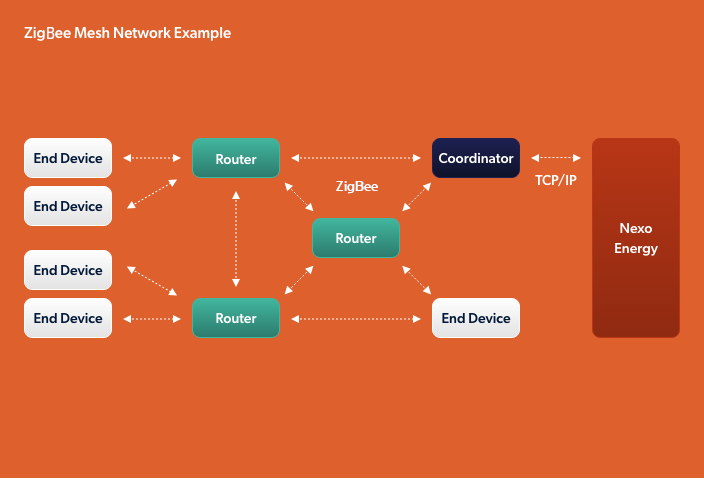ZigBee
Zigbee is a wireless communication protocol designed specifically for the Internet of Things (IoT). It is built on the IEEE 802.15.4 standard and uses mesh networking to connect devices to one another. Zigbee is a low-power, low-bandwidth solution perfect for connecting sensors, smart home devices, and other IoT devices.
One of the main advantages of Zigbee is its ability to create mesh networks. In a mesh network, each device can communicate with every other device, creating a self-healing and resilient network. This means that if one device fails, the network can still function and deliver data to the end user. Mesh networks also provide better coverage and range, making them ideal for larger homes or commercial buildings.
Zigbee has low power consumption. End devices are often designed to run on batteries, so they need to conserve power as much as possible. Zigbee’s low-power design means that devices can operate on a single battery for years.

Zigbee uses encryption and authentication features to ensure your data is always protected. This is particularly important for radio devices, which often collect sensitive personal or security data. With Zigbee, you can ensure your data is safe from malicious actors.
Zigbee is a widely adopted industry standard for home control and automation. Many major smart home device manufacturers use Zigbee in their products, which means you can be sure that it is a reliable and robust technology. Also, it is easy to replace one device with another.
Thanks to Nexo Energy, Zigbee networks are easy to deploy and use. Nexo Energy’s user-friendly interface makes setting up and managing your network simple. Nexo Energy is suited for all types of networks, from single-home units to large residential buildings and industrial facilities.
